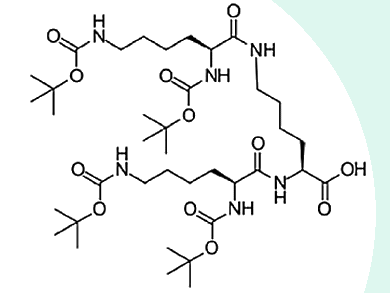William Edwards and David Smith, University of York, UK, developed a two-component acid–amine gelation system that spontaneously produces an organogel with simple mixing. The key component in this gelation system is G2-Lys (pictured), a second generation lysine dendron with Boc protecting groups at the periphery and a free carboxylic acid group at the focal point. More interesting though is that this system can evolve and adapt to stimuli, such as the addition of other changes. The system thus heals itself in response to the thermodynamic preferences of the overall system.
Organic gels and self-assembling materials with this and similar properties might find applications in so-called artificial muscles or actuators for microelectromechanical systems (MEMS) and other emergent technologies. The supramolecular molecular aspects offering a bottom-up approach to the formation of sub-microscopic components, for instance. The present work also offers a thermodynamic rationale for how organogels might adapt to changing conditions.
- Dynamic Evolving Two-Component Supramolecular Gels—Hierarchical Controlover Component Selection in Complex Mixtures,
William Edwards, David K. Smith
J. Am. Chem. Soc. 2013.
DOI: 10.1021/ja4017107




